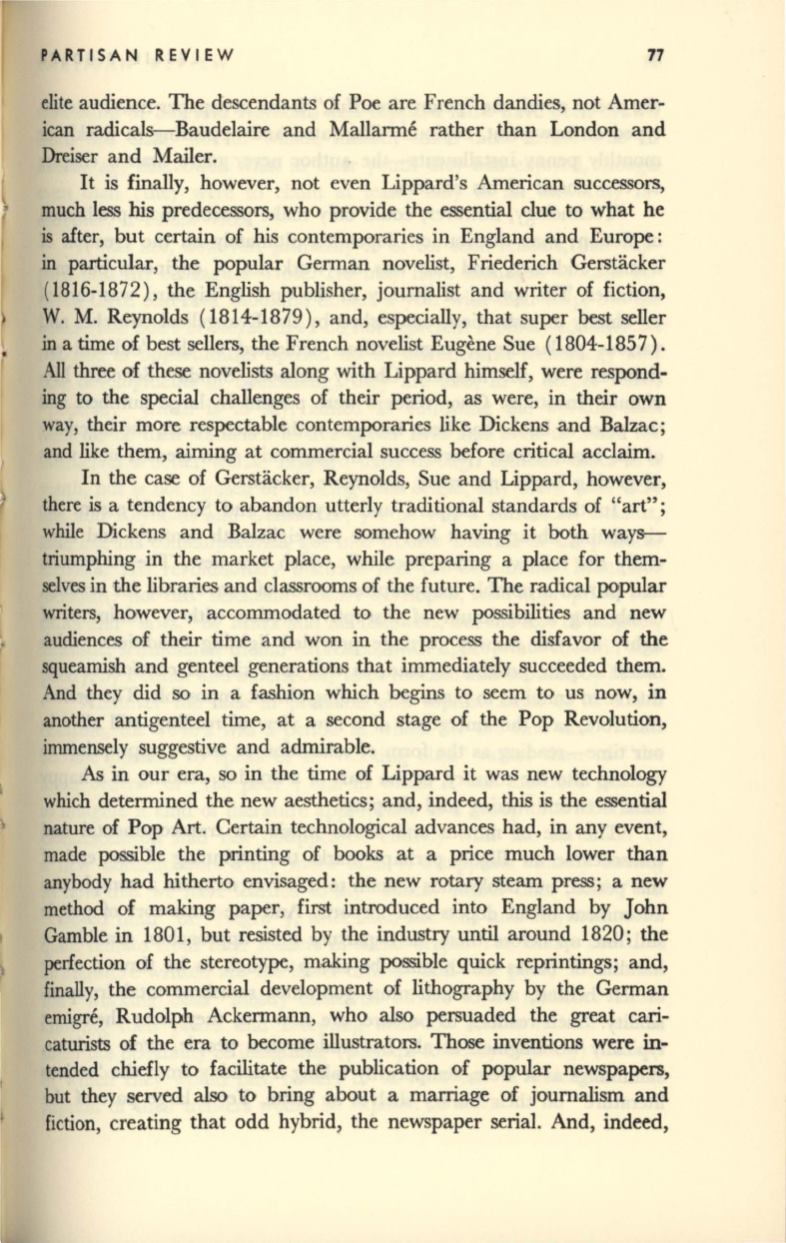
PARTISAN REVIEW
77
elite audience. The descendants of Poe are French dandies, not Amer–
ican radicals- Baudelaire and Mallarme rather than London and
Dreiser and Mailer.
It
is finally, however, not even Lippard's American successors,
much less his predecessors, who provide the essential clue to what he
is
after, but certain of his contemporaries in England and Europe:
in particular, the popular German novelist, Friederich Gersilicker
(1816-1872), the English publisher, journalist and writer of fiction,
W. M. Reynolds (1814-1879), and, especially, that super best seller
in
a time of best sellers, the French novelist Eugene Sue (1804-1857).
All three of these novelists along with Lippard
himself,
were respond–
ing
to the special challenges of their period, as were, in their own
way, their more respectable contemporaries like Dickens and Balzac;
and like them, aiming at commercial success before critical acclaim.
In the case of Gerstacker, Reynolds, Sue and Lippard, however,
there is a tendency to abandon utterly traditional standards of "art";
while Dickens and Balzac were somehow having it both ways-–
triumphing in the market place, while preparing a place for them–
selves in the libraries and classrooms of the future. The radical popular
writers, however, accommodated to the new possibilities and new
audiences of their time and won in the process the disfavor of the
squeamish and genteel generations that immediately succeeded them.
And they did so in a fashion which begins to seem to us now, in
another antigenteel time, at a second stage of the Pop Revolution,
immensely suggestive and admirable.
As
in our era, so in the time of Lippard it was new technology
which determined the new aesthetics; and, indeed, this is the essential
nature of Pop
Art.
Certain technological advances had, in any event,
made possible the printing of
books
at a price much lower than
anybody had hitherto envisaged: the new rotary steam press; a new
method of making paper, first introduced into England by John
Gamble in 1801, but resisted by the industry until around 1820; the
perfection of the stereotype, making possible quick reprintings; and,
finally, the commercial development of lithography by the German
emigre, Rudolph Ackermann, who also persuaded the great cari–
caturists of the era to become illustrators. Those inventions were
in–
tended chiefly to facilitate the publication of popular newspapers,
but they served also to bring about a marriage of journalism and
fiction, creating that odd hybrid, the newspaper serial. And, indeed,


